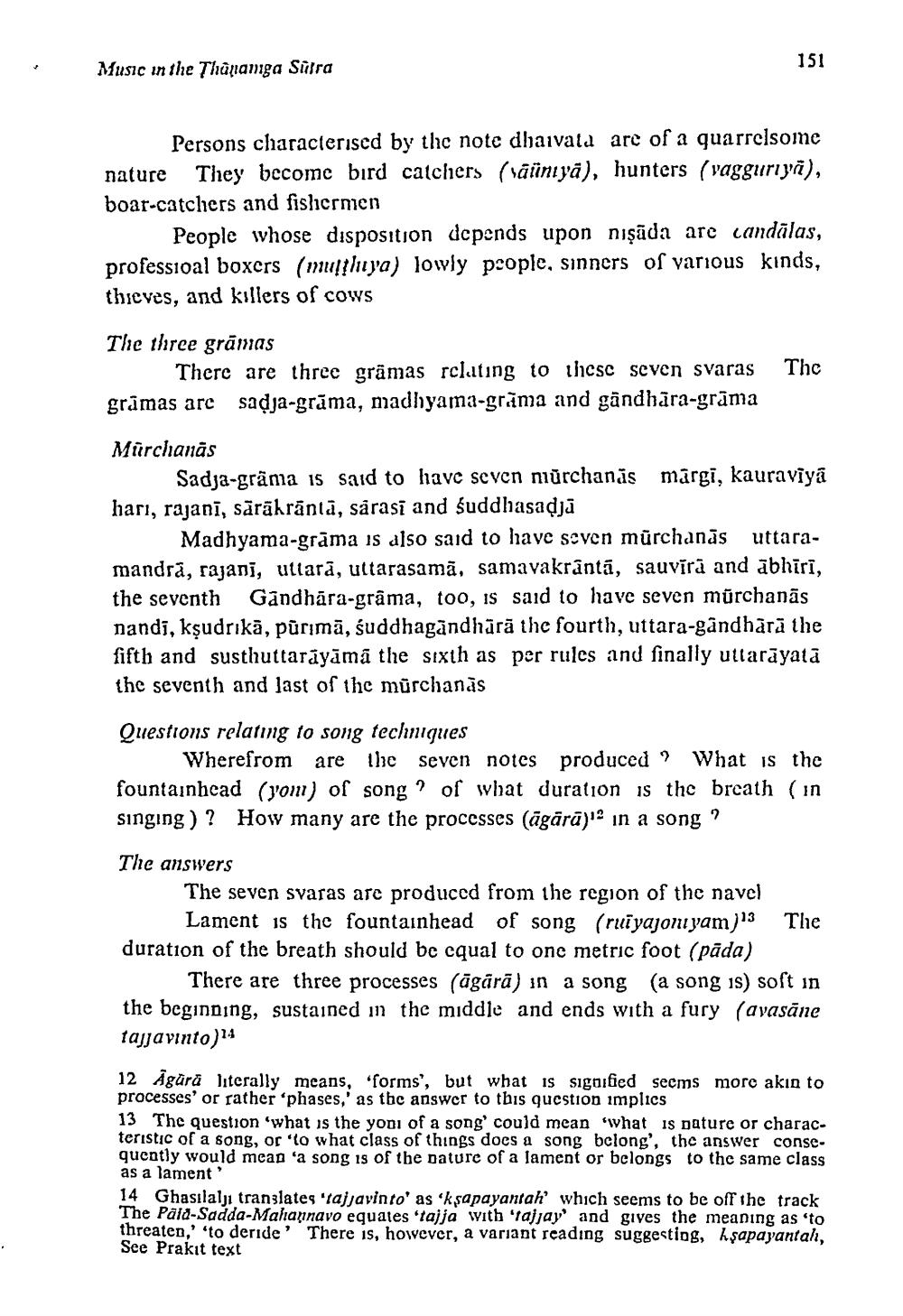________________
Music in the Thanamga Sutra
151
Persons characterised by the note dhaivata are of a quarrelsome nature They become bird catchers (sääntyä), hunters (vagguriyā), boar-catchers and fishermen
People whose disposition depends upon nişada are candālas, professioal boxers (mutthuya) lowly people, sinners of various kinds, thieves, and killers of cows
The three gramas
There are three gramas relating to these seven svaras The grāmas are sadja-grāma, madhyama-grama and gândhara-grāma
Mürchanās
Sadja-gräma is said to have seven murchanas mārgi, kauraviyā hari, rajani, sārākrāntā, sārasī and suddhasaḍjā
uttara
Madhyama-grama is also said to have seven murchanās mandra, rajani, uttara, uttarasamā, samavakrantā, sauvīrā and abhīrī, the seventh Gandhara-grama, too, is said to have seven murchanās nandi, kṣudrikā, pūrimā, śuddhagandhärä the fourth, uttara-gandhārā the fifth and susthuttarāyāmā the sixth as per rules and finally uttarāyatā the seventh and last of the murchanas
Questions relating to song techniques
Wherefrom are the seven notes produced? What is the fountainhead (you) of song ? of what duration is the breath (in singing)? How many are the processes (āgārā)12 in a song
7
The answers
The seven svaras are produced from the region of the navel Lament is the fountainhead of song (ruiyajoniyam)13 duration of the breath should be equal to one metric foot (pāda)
There are three processes (āgārā) in a song (a song is) soft in the beginning, sustained in the middle and ends with a fury (avasāne tajjavinto)14
The
12 Agară literally means, 'forms', but what is signified seems more akin to processes' or rather 'phases,' as the answer to this question implics
13 The question 'what is the yoni of a song' could mean what is nature or characteristic of a song, or 'to what class of things does a song belong', the answer consequently would mean 'a song is of the nature of a lament or belongs to the same class as a lament
14 Ghasılalı translates 'tajjavinto' as 'ksapayantah' which seems to be off the track The Pala-Sadda-Mahannavo equates 'tajja with 'tajjay' and gives the meaning as 'to threaten,' 'to deride' There is, however, a variant reading suggesting, hşapayantah, See Prakit text




